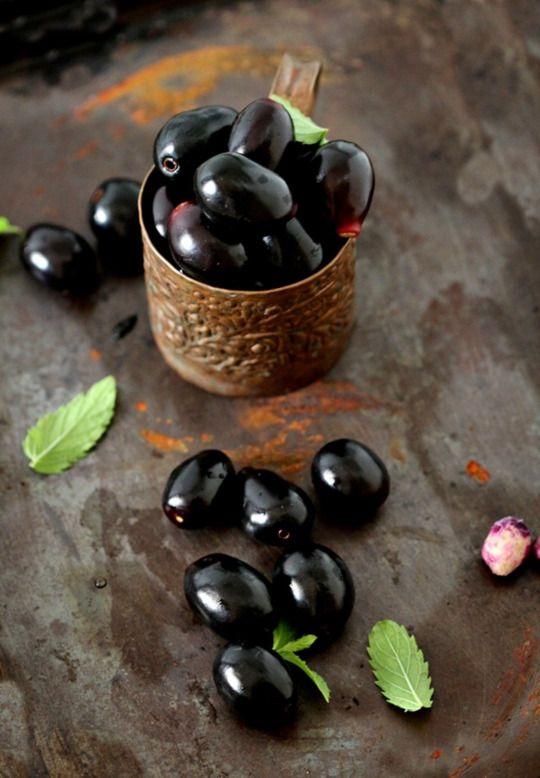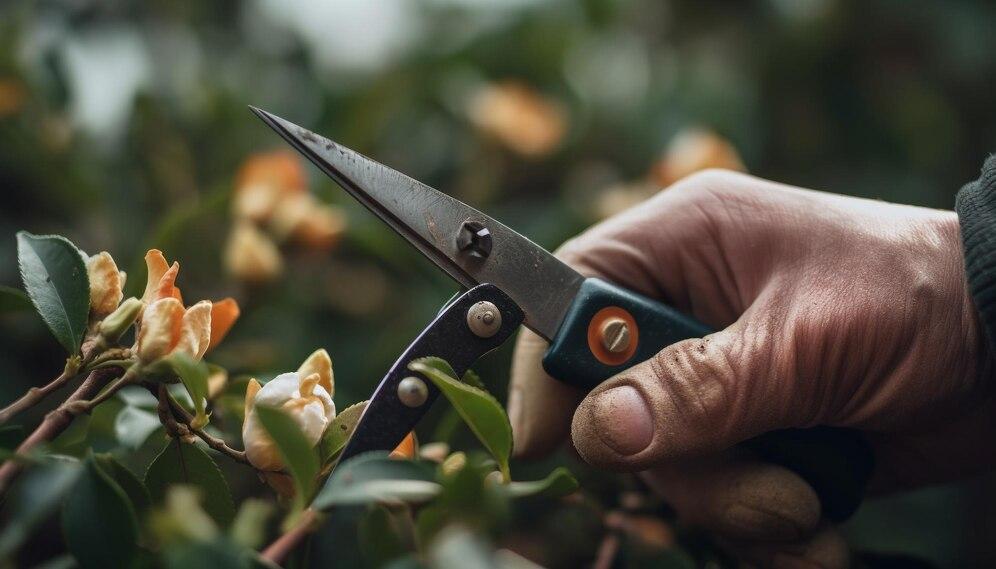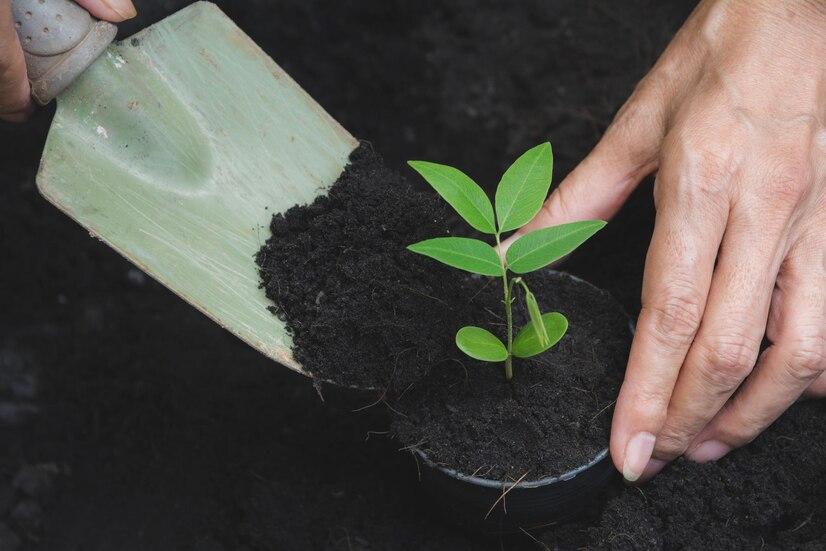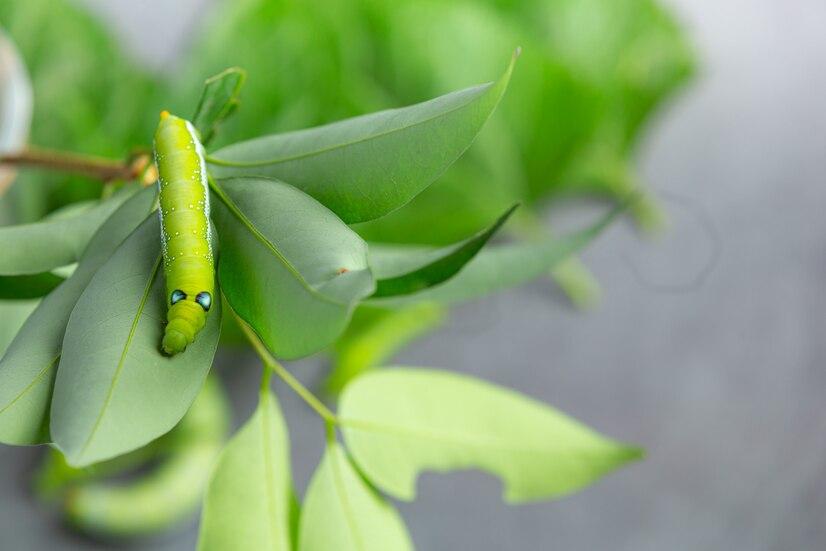



Table of Contents
- Benefits of the Jamun Tree:
- How to Grow a Jamun Tree:
- When to use fertilizer for Jamun tree?
- What kind of Pests Are Jamun Tree prone too?
- Vastu Benefits and Considerations:
- Faq's
As summer approaches in the Indian subcontinent, there is one unmistakable sign that everyone eagerly awaits the ripening of Jamun fruits on the trees. The Jamun tree, or Indian Blackberry, is not just a tree, it is a symbol of the season, signaling the arrival of warmer days and the promise of delicious treats.
As the mercury rises, people eagerly anticipate the moment when they can pluck ripe Jamun fruits straight from the branches and savor their uniquely tangy-sweet flavor. A seasonal delight that brings joy to both young and old alike.
And let us not forget the playful tradition of indulging in Jamun-eating contests, where the reward is not just the taste of the fruit but also the temporary transformation of tongues into a striking shade of blue-purple. Indeed, the Jamun tree captures the spirit of summer with its vibrant green foliage and clusters of deep purple fruits.
The Jamun tree, scientifically known as Syzygium cumini or Indian Blackberry, is a beautiful evergreen tree that grows in tropical regions like the Indian subcontinent. People love it for its tasty fruit, colorful leaves, and many health perks. It is not just any tree, it is an important part of cultures, kitchens, and medicine cabinets worldwide.
However many might think growing a Jamun tree is difficult, but in reality it is not. They like warm, humid climates and do well in rich, well-drained soil and love lots of sun for good growth.
In this article, we will guide you into how to grow and take care of Jamun trees, their advantages, and even how they fit into Vastu beliefs.
Also Read: Shami Plant: How to Grow, Vastu & Spiritual Benefits, Placement & Care
Benefits of the Jamun Tree:
Nutritious Fruit
In addition to its delectable taste, the Jamun fruit boasts numerous health benefits. It is rich in essential nutrients, including vitamins A and C, calcium, potassium, and antioxidants such as anthocyanins and flavonoids. These nutrients contribute to the vibrant purple hue of the fruit and play a vital role in promoting overall health and well-being.
Consuming Jamun fruit is believed to offer several health advantages. Its antioxidant properties help combat oxidative stress and reduce the risk of chronic diseases such as heart disease, diabetes, and cancer. The high levels of vitamin C bolster the immune system, supporting defense against infections and illnesses.

Medicinal Properties
In Ayurveda, Jamun fruit is known for its potential to regulate blood sugar levels, making it particularly beneficial for individuals with diabetes. It contains compounds like jamboline and ellagic acid, which may help improve insulin sensitivity and lower blood glucose levels.
Additionally, Jamun fruit is renowned for its astringent properties, which can aid in treating digestive issues such as diarrhea and dysentery. The high fiber content of the fruit promotes healthy digestion and regulates bowel movements, alleviating constipation and promoting gut health.
Furthermore, regular consumption of Jamun fruit may contribute to improved skin health, as its antioxidant content helps combat free radical damage and premature aging. It also supports overall hydration and promotes a radiant complexion.
The Jamun fruit is also revered for its therapeutic properties and is used to treat various ailments ranging from respiratory problems to oral health issues. Its cooling nature makes it particularly beneficial during the hot summer months, providing relief from heat-related conditions like sunstroke and dehydration.
Environmental Benefits

The Jamun tree is valued for its ability to provide shade, improve air quality, and support biodiversity. Its dense foliage and spreading canopy offer relief from the scorching sun, while attracting birds, bees, and other pollinators with its fragrant flowers and nutritious fruit.
How to Grow a Jamun Tree:
Climate and Soil
Jamun trees are abundant in regions with tropical and subtropical climates, particularly across the Indian subcontinent, Southeast Asia, and parts of Australia. They flourish in warm, humid environments but can also tolerate periods of drought once established.
Temperatures between 25 degree C and 35 degree C (77 degree F to 95 degree F) are ideal for Jamun tree growth, but fluctuation is likely. However it is important to note that Jamun trees are deciduous and require a period of dormancy during cooler months to facilitate flowering and fruiting. Therefore, they may not be suitable for regions with consistently cold temperatures or prolonged frost periods.
In terms of soil, Jamun trees prefer well-drained, loamy soil that is rich in organic matter. While they can adapt to various soil types, including sandy and clay soils, they thrive in soil with a slightly acidic to neutral pH level (pH 6.0 to 7.5). This pH range allows for optimal nutrient uptake and healthy root development.

Propagation Methods
Jamun trees can be propagated from seeds, cuttings, or air-layering. Seeds should be collected from ripe fruits and planted during the monsoon season or in early spring. It is always the best practice to use cuttings from healthy, mature branches and rooted in moist, sandy soil.
In addition, you can also put some cinnamon powder or rooting powder at the base of the branch after it has been cut and put it in a glass of water. Dont forget to change the water every two days. In a few days, the roots will pop out, and then you can plant it in the ground.

Planting Method
Choose a sunny location with sufficient space for the tree to grow and spread. Dig a hole slightly larger than the root ball and place the sapling at the center, ensuring that the roots are well-covered with soil. Water thoroughly after planting and provide regular irrigation until the tree becomes established.

Watering Requirements
Jamun trees need consistent moisture, especially during hot, dry periods, so check the soil and water. If its damp then water when the top soil gets dry. Periods other than summer, Water deeply once a week, adjusting frequency based on soil moisture levels. Ensure proper drainage is there to prevent waterlogging as excess water can lead to root rot which if not tended to can kill the plant.

Pruning and Training
It is a good ides to prune the Jamun tree regularly to remove dead, diseased, or overcrowded branches and promote healthy growth. Pruning old and diseased leaves and branches helps reserve and direct the water and energy flow to branches that need to thrive.

When to use fertilizer for Jamun tree?
To promote healthy growth and abundant fruiting, Jamun trees benefit from regular fertilization. Here is a basic guide to fertilizing Jamun trees:

Timing: Fertilize Jamun trees during the active growing season, typically in spring and early summer. Avoid fertilizing during the dormant winter months.
Type of Fertilizer: Use a balanced fertilizer formulated for fruit trees or specifically for citrus and tropical fruit trees. Look for a fertilizer with a balanced ratio of nitrogen (N), phosphorus (P), and potassium (K), such as 10-10-10 or 8-8-8.
Application Rate: Follow the instructions on the fertilizer package for the correct application rate based on the size and age of your Jamun tree. Generally, mature trees may require around 1 to 2 pounds of fertilizer per year, divided into multiple applications.
Method of Application: Scatter the fertilizer evenly around the drip line of the tree, which is where the outer edge of the canopy extends. Avoid placing fertilizer directly against the trunk to prevent burning. Water the area thoroughly after applying fertilizer to help it penetrate the soil and reach the roots.
Additional Nutrients: In addition to a balanced fertilizer, Jamun trees may benefit from supplemental micronutrients like zinc, magnesium, and iron. Consider using a fertilizer blend that includes these micronutrients or apply them separately according to soil test recommendations.
Organic Options: Alternatively, you can use organic fertilizers such as compost, aged manure, or organic fruit tree fertilizers. These options provide slow-release nutrients and improve soil health over time.
Frequency: For established Jamun trees, fertilize once or twice a year, preferably in spring and early summer. Young trees may benefit from more frequent fertilization, such as every 4 to 6 weeks during the growing season.
Watering: After fertilizing, water the tree deeply to ensure that the nutrients are absorbed into the soil and reach the roots. Adequate watering is essential to prevent fertilizer burn and promote nutrient uptake.
By following these fertilizer guidelines, you can help your Jamun tree thrive and produce bountiful harvests of delicious fruits. Regular fertilization, combined with proper watering and care, will keep your Jamun tree healthy and productive for years to come.
What kind of Pests Are Jamun Tree prone too?
Monitor the Jamun tree regularly for signs of pests such as fruit flies, aphids, and mealybugs, as well as diseases like anthracnose, powdery mildew, and leaf spot. Use organic insecticides and fungicides as needed, and practice good sanitation to prevent infestations and infections.

Vastu Benefits and Considerations:
In Vastu Shastra, the ancient Indian science of architecture and spatial arrangement, planting certain trees, including the Jamun tree, is believed to bring positive energy and prosperity to the home. However, it is essential to consider the following guidelines:
Plant the Jamun tree in the northeast or east direction of the property to enhance positive vibrations and promote overall well-being. Avoid planting it too close to the main entrance or in the southwest corner, as this may disrupt the flow of energy.
Choose a healthy, well-proportioned Jamun tree with a straight trunk and balanced branches for maximum Vastu benefits. Avoid trees with irregular growth patterns, leaning trunks, or excessive pruning, as these may symbolize instability or imbalance.
Keep the Jamun tree well-maintained and pruned to promote healthy growth and positive energy flow. Remove dead or decaying branches, weeds, and debris from around the tree regularly to prevent negative influences and stagnation.
explore further
Latest from Contemporary ideas
More from Innovations
Resources
Dwello, for every home buyer, is a way to go from 'I feel' to 'I know', at no extra cost.




